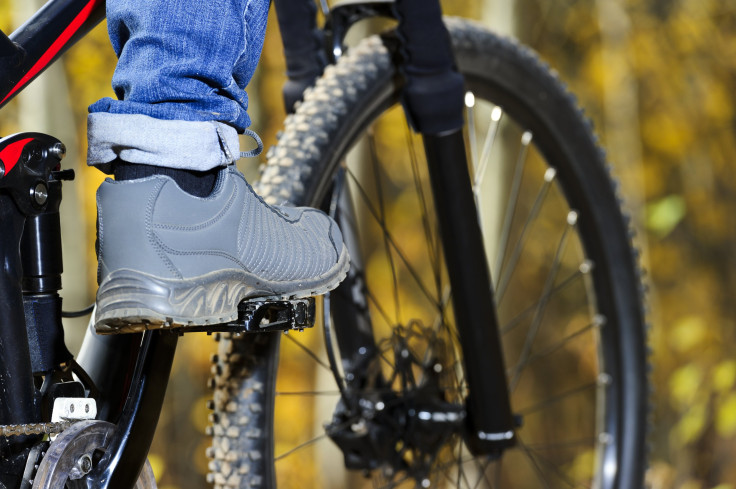Pedal At Your Desk To Fight A Sedentary Lifestyle: ‘Bike Desks’ Make Employees Healthier, Happier

The harms of a sedentary lifestyle are clear: Sitting all day can affect nearly every aspect of your health, from your heart to your brain. It can contribute to diabetes, obesity, heart disease, and even mental illnesses like depression and anxiety. Yet, we still haven’t quite figured out how to fight it, especially in an office setting.
While standing desks are always an option — as well as being sure to take breaks every half hour to walk and stretch — researchers from the University of Iowa (UI) wanted to test the efficacy of another method: the desk bike. The team, led by Lucas Carr, assistant professor of health and human physiology at UI, provided 27 participants working at a company in Iowa City with a pedal device under their desk. They used the activeLife Trainer, a pedaling machine that goes under the desk and allows users to engage in low-intensity, consistent exercise throughout the day.
“We wanted to see if workers would use these devices over a long period of time, and we found the design of the device is critically important,” Carr said in a press release.
The researchers tested the devices on the employees for 16 weeks, tracking their daily pedal time. Most employees averaged about 50 minutes per day, but they were more likely to use their device if they found it comfortable and easy to use, and if it was their own rather than a shared one. Employees who pedaled more were more likely to lose weight, have better focus at work, and take fewer sick days.
Indeed, squeezing in physical activity before, after, and during work can make a huge difference in your mental and physical health. But it’s often hard to take time out during work for a 30-minute walk or run. Research has also shown that a quick workout might not be enough to balance out the 7.5 hours or more of sitting in the office. That’s why it’s all the more important to find ways to move around at your desk — even if it’s low-intensity physical activity from using the pedal device.
The positive results of the study give hope to Carr, who aims to battle the sedentary lifestyles most Americans experience at home and work. At the end of the study, 70 percent of participants wanted to keep their “desk bike,” hinting that providing workers with exercise options could make them healthier and happier.
Interestingly, it’s not the exercise freaks that Carr is targeting. Instead, he’s trying to find a way to engage the employees who are less likely to go to the gym and be healthy in general. The pedal device could be an easy, low-resistance option for couch potatoes to get moving without going far. Then again, there’s always the possibility that the multi-tasking effort put into typing while pedaling will be distracting. Nevertheless, having the option to try it is always nice.
“A lot of companies have gone the route of building expensive fitness facilities, that typically get used only by the most healthy employees,” Carr said. “The people who need to improve their health the most are less likely to use worksite fitness facilities. This is something that could be provided to just about any employee, regardless of the size of their company or office.”
The machine is literally “right at their feet,” he notes, “and they can use it whenever they want without feeling self-conscious in front of their co-workers.”
Source: Carr L, Leonhard C, Tucker S, Fethke N, Benzo R, Gerr F. Total Worker Health Intervention Increases Activity of Sedentary Workers. American Journal of Preventive Medicine, 2015.



























